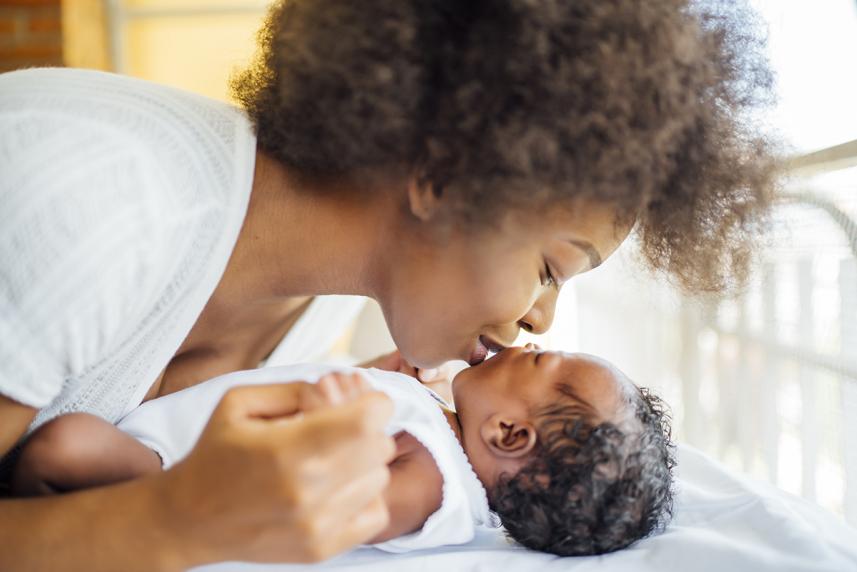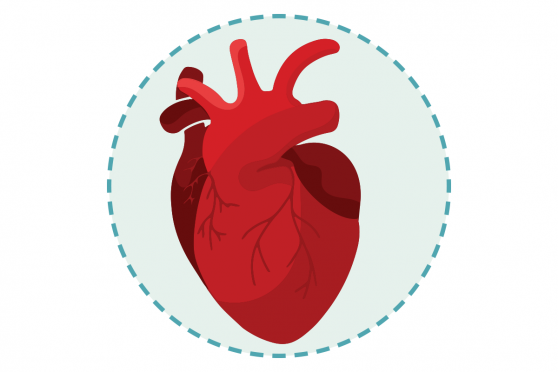Your baby might have these unexpected symptoms. Should you worry or not?
Green snot, black poop, crossed eyes—are they normal or problematic? One expert shares advice.

New moms worry about a lot: growth charts, milestones, surviving parenthood with sanity intact. And we get it. There’s a lot at stake. But the most panic-triggering observations come when moms notice something in their baby that just seems … different. Fortunately, in many cases, it’s harmless—the mom just doesn’t know that yet!
“At least one to five times a day, we get calls from concerned parents about things that are normal in newborns,” says Stephanie Bosche, a pediatric nurse practitioner at Tri-County Pediatrics in Philadelphia.
Of course, the hard part is figuring out if the odd thing you’ve noticed about your baby is actually normal or something worth calling a doctor about.
Typically, these calls come from first-time moms but not always. “I also see moms who say, ‘Well, my first two kids didn’t have this. Why does this one have it?’” says Bosche. “Every baby is different. These things could happen in all your kids or none of them.” (This is one reason it’s not a good idea to rely solely on other moms or blogs for advice.)
To help maneuver your way through these tricky parental observations, here are some unexpected things you may notice in your baby, along with some vital information on when you can sit back and take no action and when you should call the doctor.
1. Scaly scalp
A baby’s skin isn’t always soft and smooth. Maternal hormones may trigger the oil glands to produce too much sebum, causing thick white or yellow scales on the baby’s scalp (called cradle cap). Wash your baby’s scalp with a mild shampoo once a day and try loosening the scales with a soft-bristled brush. (Don’t scratch!) If it doesn’t clear up in four months, or if the patches spread to your baby’s face or body, call the pediatrician, Bosche says.
2. So. Much. Poop. (Or hardly any!)
When it comes to poop, there’s a wide range of normal. “Some babies go with every diaper change, like eight times a day,” Bosche says. Others go every couple of days or even once a week.
Breast milk leaves very little solid waste behind, according to the American Academy of Pediatrics (AAP). So infrequent poops don’t necessarily mean constipation. As long as your baby is otherwise normal, gaining weight and nursing regularly, your child is probably fine. However, if you are feeding formula to your baby, expect at least one bowel movement (BM) a day.
3. Black, sticky poop in the first few days
Baby’s first stools are greenish black and tarlike, as the meconium that collected in the intestines before birth passes through the system. After that, it tends to be soft and a bit runny, and may vary between brown, tan, yellow and green. Once your baby starts eating food other than breast milk or formula, BMs will be more what you are used to as an adult in color and texture.
However, if the color is chalky or white, call the doctor right away—it could be a sign of liver problems. Black poop other than meconium can suggest blood is present, so call the doctor to be safe.
4. Blood in the diaper
See a little red in your new baby girl’s diaper? She may be having a menstrual period, triggered by the withdrawal of hormones she was exposed to in the womb. It can happen anytime between 2 and 10 days old, and it is totally normal. However, if bleeding seems excessive, doesn’t fade after a few days or occurs in a baby boy, call the doctor.
5. Swollen breasts or nipple discharge
Bosche still remembers one mother’s shock at seeing her baby boy lactate. The mother brought her son in after noticing lumps under his nipples, and Bosche pressed on the area during the exam, causing the discharge to excrete. “She was like, ‘Is that milk?’” Bosche recalls. That’s exactly what it was, and believe it or not, it’s normal.
Estrogen from the mother may cause swollen breasts, lumps or even milky nipple discharge. “It can feel like a hard lump right under the nipple,” says Bosche. It should go away in about a month.
6. Green snot
If you see it in the morning, don’t worry. As your baby sleeps, bacteria can collect in the mucus and turn it green. Noses act like a filter, trapping germs before they can enter the body, Bosche explains. “A lot of times, a baby might sneeze in the morning and get out a big green booger,” she says.
If the green color lasts all day for several days, or if nasal congestion is interfering with your baby’s breathing, book a doctor’s appointment to check for a sinus or other infection. If the little one is really stuffed up, try using a baby nasal aspirator. Its plastic pointed bulb is designed to suck out the snot.
7. Swollen genitals
Baby boys can have a swollen scrotum just after birth, and girls may get labial swelling, Bosche says. It may be due to extra fluid or hormones passed from Mom to her baby. It can last up to two weeks and sometimes longer in boys, Bosche says.
In fact, about 5% of newborn boys are born with a condition known as hydrocele, a buildup of fluid that can cause the scrotum to swell. It’s painless, harmless and should clear up by the time your baby’s first birthday comes around. But call the doctor to rule out anything more serious.
8. Cone head
A newborn’s head is pretty moldable. It’s made of several small bones (which eventually fuse together) so squeezing through the birth canal will be easier. After birth, a baby’s head can look elongated, stretched or pointed. But it should round out within days or, in severe cases, up to a week, Bosche says.
However, if you also notice a big lump on the scalp, call the doctor. It may be a cephalohematoma, a bruise that occurs during labor and delivery. It is likely no cause for alarm, but it should be treated by a doctor.
9. Irregular breathing
Babies have much more irregular breathing patterns than adults do, Bosche says. They may pause between breaths for a couple of seconds, and that’s normal. However, if the pauses are longer than 10 seconds, or if your baby’s skin or lips turn blue, call the doctor right away.
10. Racing heart beat
Because a baby’s heart is smaller and not yet as strong as an adult’s, it has to pump faster to circulate blood to the entire body, Bosche says. In fact, a newborn’s resting heart rate can be 130 to 150 beats per minute, according to the AAP.
11. Crossed eyes
For the first two months, an infant’s eyes are not well-coordinated and may appear to be crossed, according to the American Optometric Association. That’s normal. But if one eye turns in or out constantly, or if your baby is older than 4 months, talk to your doctor.
12. Acne
A lot of babies develop pimples on their face at about a month old, Bosche says. That should clear up on its own. Don’t try to treat it with extra baths or special soaps—you risk irritating your baby’s sensitive skin. However, if you notice a purplish rash or blisters, call the doctor, Bosche says. It may indicate an infection.
13. Peeling
Newborn babies peel like crazy, especially around the hands and ankles. “Sometimes a whole layer of skin peels off,” Bosche says. “That’s the skin adjusting to its new environment.” Resist the urge to apply lotion, Bosche says. It may interfere with the skin’s natural oil production or irritate the baby’s sensitive skin.



